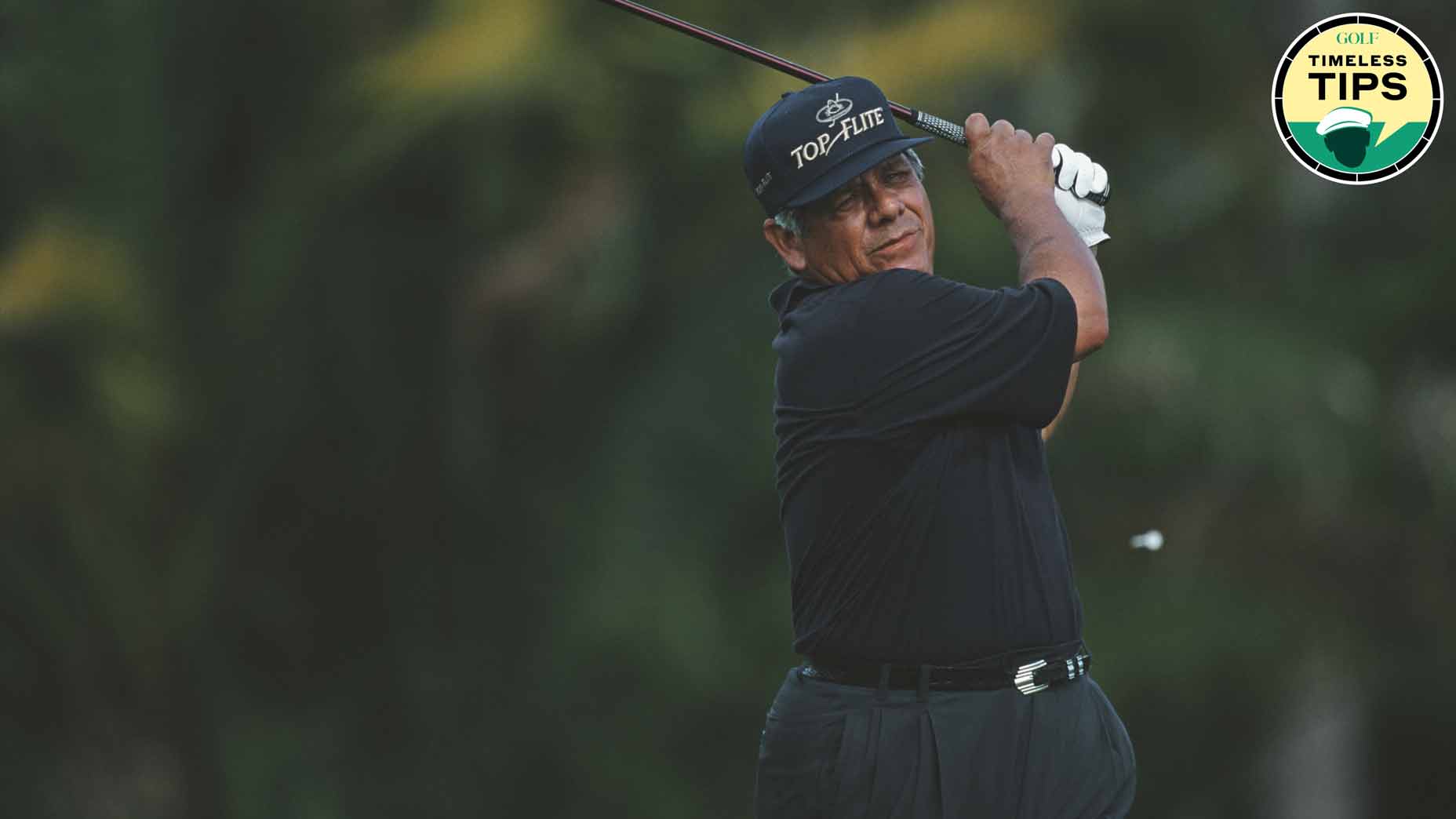Lee Trevino helped put this popular club on the map

Lee Trevino was one of the first pros to reap the benefits of high-lofted fairway woods.
Getty Images
Do a quick search for 7-woods on GOLF.com and you’re bound to find a few articles proclaiming it as the club du jour. I can’t recall exactly when high-lofted fairway woods started taking off in the professional ranks, but I do remember Bubba Watson and several of his colleagues opting for a 7-wood at the 2015 Players Championship, where it made sense to have a club that could extract the ball from the rough, with a towering launch to boot.
In recent years, the 7-wood has gone from a niche club to an offering every manufacturer has in their arsenal. It’s ubiquitous. Whether you want to believe it or not, mass acceptance amongst pros made it cool for recreational golfers — particularly those with a single-digit handicap — to carry something with 21-plus degrees of loft, instead of a long iron or hybrid.
But is this really a trend that started gaining traction only in the past five to 10 years? I attempted to find out.
Seeking out the origin behind a club’s rise to popularity can take you down some fun paths. In this particular case, I happened upon a story from the GOLF Magazine’s digital archives (InsideGOLF has access to 600-plus issues) that all but confirms Lee Trevino helped popularize the club in some form or fashion.
In the 1980s, traditional long irons remained a common sight at the top of the set. Blended offerings featuring forgiving long irons and workable mid- and short irons hadn’t come into the picture, so pros relied on iron compositions that offered little in the way of forgiveness. As a low-ball hitter who struggled to land the ball on elevated greens, Trevino found the 6-wood produced a towering launch with little effort.
“It’s one of the most versatile clubs in my bag,” Trevino wrote in a 1982 issue of GOLF Magazine. “It’s my baby.”
For a gearhead, the most fascinating bit about Trevino’s 6-wood is how it came to life in the 1970s. When the six-time major winner began the search for a high-lofted fairway wood, he quickly realized it would need to be custom-made to fit his eye and specifications.
“The first thing I noticed about the lofted fairway woods was that they had hooked faces,” Trevino wrote. “For the majority of amateur golfers, this is fine. However, I tend to play the fade and try to work the ball a lot, having the opportunity to practice every day. I wanted a square face on my club.”
Trevino wound up selecting a block of wood that was destined to be a 3-wood and had the clubmaker put 6-wood loft on it. Don’t forget, these were the days of persimmon when you didn’t have the luxury of using CAD or 3D printing to get things just right before a final version was created. This was all done in the moment.
“He cut the face back deep into the head so the actual size of the clubhead is that of most 5-woods, maybe even a 4-wood,” he said. “In this manner, I was able to get a bit deeper face, which helps get the ball up quicker and easier out of the rough, and also increases the margin for error.”
When you’re removing a significant amount of material from the head to get the correct loft, additional alterations need to be made to get the swingweight just right. In Trevino’s case, he was looking “for plenty of headweight.” To achieve a D5 swing weight — noticeably heavier than the other clubs in the bag — Trevino had the clubmaker make a full brass soleplate with additional lead underneath the plate to bump up the overall mass.
“To accommodate all this weight in the head, I had a very stiff shaft installed, the equivalent of a double X,” Trevino recalled. “It actually is a stiff shaft that’s tipped about 3 inches. This combination of low center of gravity and no flex action in the shaft almost gives me the feeling of hitting my irons, or even a wedge.”
Trevino was an early version of Bryson DeChambeau and Phil Mickelson, crafting one-off clubs he believed would deliver a competitive edge on the course. Trevino not only found the 6-wood to be a worthy club when attacking elevated greens, he even wrote in subsequent articles for GOLF Magazine about its ability to dislodge the ball from deep rough inside 150 yards.
Trevino embraced the versatility of the club, long before it became a common sight in the bags of pros and amateurs. Four decades after he proclaimed that “everyone who is not a scratch player should be carrying one or more of these clubs,” the high-lofted fairway wood has finally become a must-have club.
We can thank one of the all-time greats for helping set the trend in motion.











